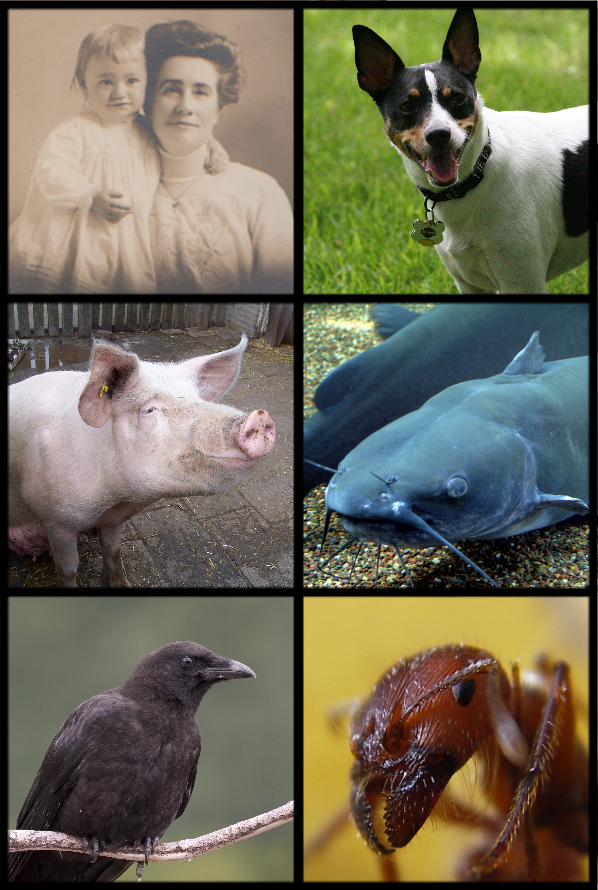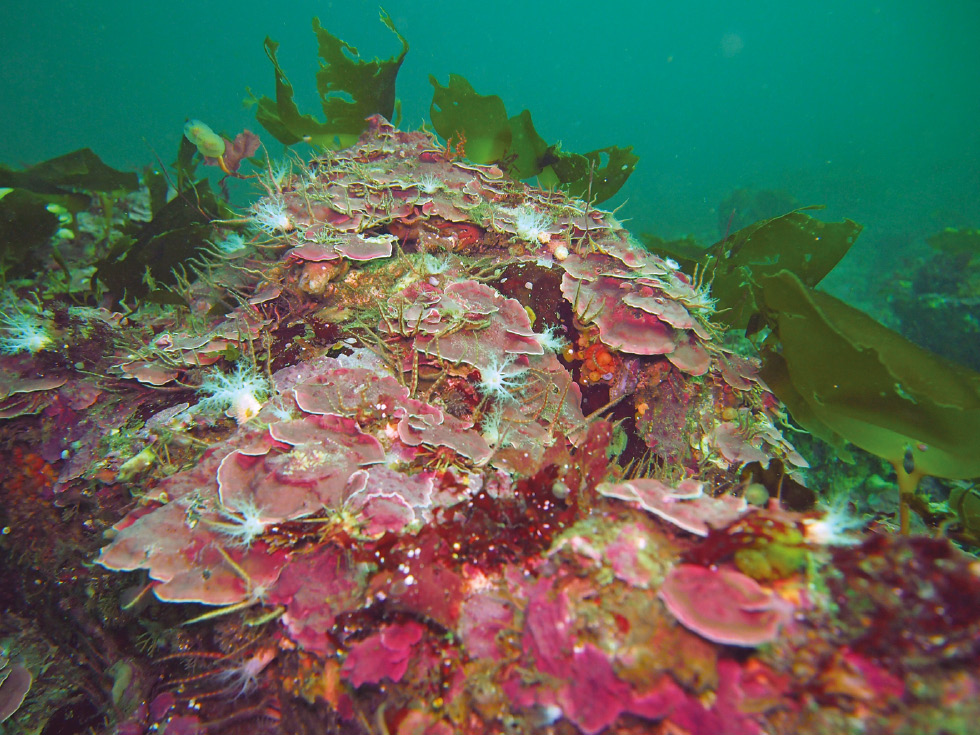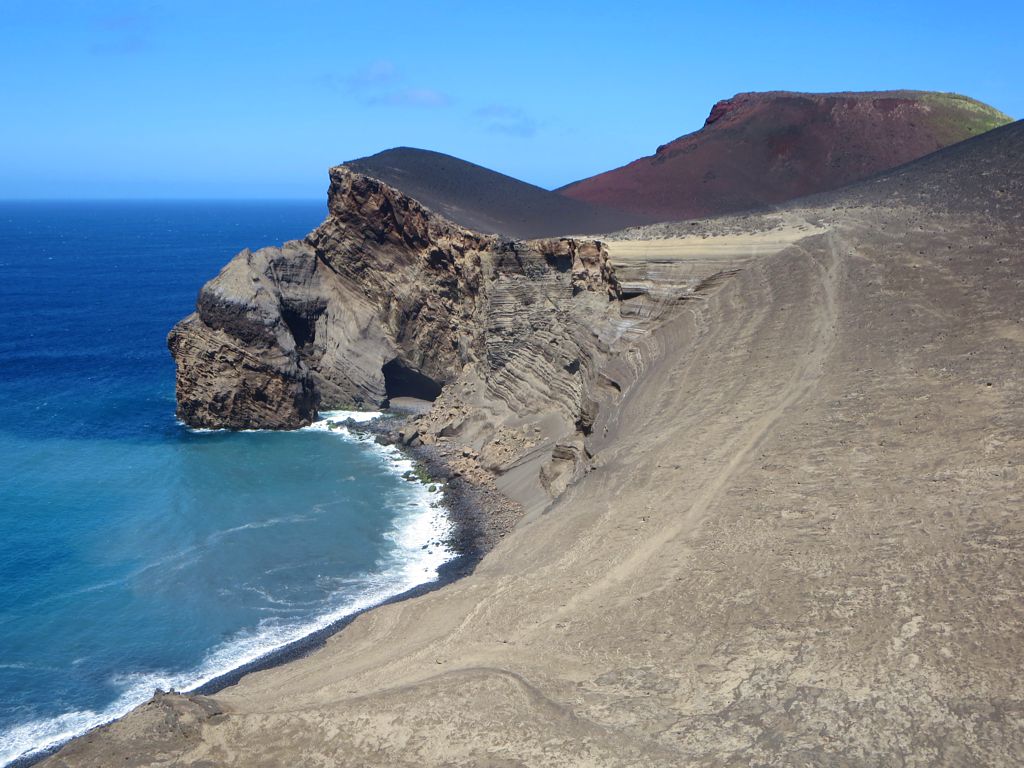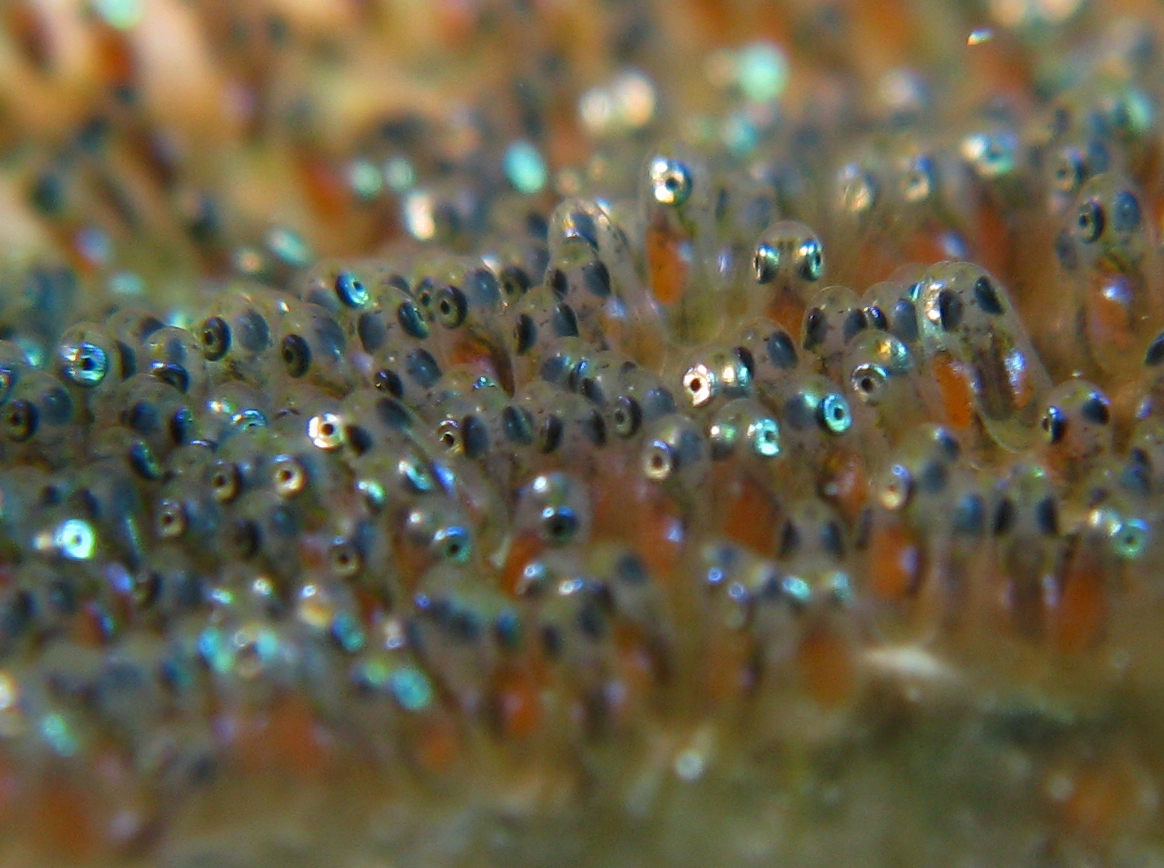|
Coryphoblennius Galerita
Montagu's blenny (''Coryphoblennius galerita''), also known as the capuchin blenny, is a species of combtooth blenny found in the intertidal zones of the eastern Atlantic ocean from England to Madeira and the Canary Islands as well the Mediterranean Sea, the Black Sea and the Sea of Marmara. This species prefers rocky shores with much wave action. This species grows to a length of SL. It is the only species in the genus ''Coryphoblennius''. Description Montagu's blenny is small and has an elongated body which has no scales, its eyes are set on top of the head and its mouth points downwards. It attains a Total Length of . The background colour is pale brown marked with olive-green vertical stripes and light blue spots. There is a single dorsal fin that runs along the total length of its body with an obvious notch part of the way along. There is fringed, fleshy crest situated between its eyes and, in at least in Britain and Ireland, this feature distinguishes Montagu's blenny ... [...More Info...] [...Related Items...] OR: [Wikipedia] [Google] [Baidu] |
John Roxborough Norman
John Roxborough Norman (1898, Wandsworth, London – 26 May 1944, Berkhamsted, Hertfordshire) was an English ichthyologist. He started as a clerk in a bank. His lifetime affliction with rheumatic fever began during his military service during the First World War. He entered the British Museum in 1921 where he worked for Charles Tate Regan (1878-1943). From 1939 to 1944, he was in charge of the Natural History Museum at Tring as the Curator of Zoology. Norman was the author of, among others, ''A History of Fishes'' (1931) and ''A Draft Synopsis of the Orders, Families and Genera of Recent Fishes'' (1957). He was considered closer to Albert Günther Albert Karl Ludwig Gotthilf Günther FRS, also Albert Charles Lewis Gotthilf Günther (3 October 1830 – 1 February 1914), was a German-born British zoologist, ichthyologist, and herpetologist. Günther is ranked the second-most productive re ... (1830-1914) than to Regan. See also * :Taxa named by John Roxborough Norman Referenc ... [...More Info...] [...Related Items...] OR: [Wikipedia] [Google] [Baidu] |
Biological Journal Of The Linnean Society
The ''Biological Journal of the Linnean Society'' is a direct descendant of the oldest biological journal in the world, the '' Transactions of the Linnean Society''. It succeeded the earlier title in 1969. The journal specializes in evolution, and encompasses work across all taxonomic groups in all five kingdoms of living organisms. It includes all methods, whole-organism or molecular A molecule is a group of two or more atoms held together by attractive forces known as chemical bonds; depending on context, the term may or may not include ions which satisfy this criterion. In quantum physics, organic chemistry, and bioche ..., practical or theoretical. The journal is published by the Linnean Society of London. References External links * Linnean Society of London Biology journals English-language journals Publications with year of establishment missing {{biology-journal-stub ... [...More Info...] [...Related Items...] OR: [Wikipedia] [Google] [Baidu] |
Genus
Genus ( plural genera ) is a taxonomic rank used in the biological classification of living and fossil organisms as well as viruses. In the hierarchy of biological classification, genus comes above species and below family. In binomial nomenclature, the genus name forms the first part of the binomial species name for each species within the genus. :E.g. '' Panthera leo'' (lion) and '' Panthera onca'' (jaguar) are two species within the genus ''Panthera''. ''Panthera'' is a genus within the family Felidae. The composition of a genus is determined by taxonomists. The standards for genus classification are not strictly codified, so different authorities often produce different classifications for genera. There are some general practices used, however, including the idea that a newly defined genus should fulfill these three criteria to be descriptively useful: # monophyly – all descendants of an ancestral taxon are grouped together (i.e. phylogenetic analysis should c ... [...More Info...] [...Related Items...] OR: [Wikipedia] [Google] [Baidu] |
Piddock
Pholadidae, known as piddocks or angelwings, are a family of bivalve molluscs similar to a clam. Background Piddocks are unique in that each side of their shells is divided into 2 or 3 separate sections. Furthermore, one of the piddock's shells has a set of ridges or "teeth", which they use to grind away at clay or soft rock and create tubular burrows. The shape of these burrows are due to the rotating motion of the piddock as it grinds the rock to make its home. The piddock stays in the burrow it digs for the entirety of its eight-year lifespan, with only its siphon exposed to take in water that it filters for food. When the piddock dies and leaves an empty tubular burrow, other marine life such as sea anemone, crabs and other molluscs may use the burrow. Some species of Pholadidae may reach up to 18 cm (7″). Their coloration is typically white, though through consumption of red tide algae some may develop a pink coloration. * The angelwing species ''Cyrtopleura costata' ... [...More Info...] [...Related Items...] OR: [Wikipedia] [Google] [Baidu] |
Acorn Barnacle
Acorn barnacle and acorn shell are vernacular names for certain types of stalkless barnacles, generally excluding stalked or gooseneck barnacles. As adults they are typically cone-shaped, symmetrical, and attached to rocks or other fixed objects in the ocean. Members of the barnacle order Balanomorpha are often called acorn barnacles. In addition, several species of barnacles are specifically called by the common name "acorn barnacle", including: * '' Balanus glandula'', Common Acorn Barnacle * ''Balanus nubilus'', Giant Acorn Barnacle * ''Chthamalus antennatus'', Acorn Barnacle * ''Megabalanus coccopoma'', Titan Acorn Barnacle * ''Megabalanus tintinnabulum'', Titan Acorn Barnacle * ''Paraconcavus pacificus'', Red-striped Acorn Barnacle * ''Semibalanus balanoides ''Semibalanus balanoides'' (common barnacle, common rock barnacle, northern rock barnacle) is a common and widespread boreo-arctic species of acorn barnacle. It is common on rocks and other substrates in the intert ... [...More Info...] [...Related Items...] OR: [Wikipedia] [Google] [Baidu] |
Omnivory
An omnivore () is an animal that has the ability to eat and survive on both plant and animal matter. Obtaining energy and nutrients from plant and animal matter, omnivores digest carbohydrates, protein, fat, and fiber, and metabolize the nutrients and energy of the sources absorbed. Often, they have the ability to incorporate food sources such as algae, fungi, and bacteria into their diet. Omnivores come from diverse backgrounds that often independently evolved sophisticated consumption capabilities. For instance, dogs evolved from primarily carnivorous organisms (Carnivora) while pigs evolved from primarily herbivorous organisms (Artiodactyla). Despite this, physical characteristics such as tooth morphology may be reliable indicators of diet in mammals, with such morphological adaptation having been observed in bears. The variety of different animals that are classified as omnivores can be placed into further sub-categories depending on their feeding behaviors. Frugivores in ... [...More Info...] [...Related Items...] OR: [Wikipedia] [Google] [Baidu] |
Coralline Algae
Coralline algae are red algae in the order Corallinales. They are characterized by a thallus that is hard because of calcareous deposits contained within the cell walls. The colors of these algae are most typically pink, or some other shade of red, but some species can be purple, yellow, blue, white, or gray-green. Coralline algae play an important role in the ecology of coral reefs. Sea urchins, parrot fish, and limpets and chitons (both mollusks) feed on coralline algae. In the temperate Mediterranean Sea, coralline algae are the main builders of a typical algal reef, the ''Coralligène'' ("coralligenous"). Many are typically encrusting and rock-like, found in marine waters all over the world. Only one species lives in freshwater. Unattached specimens (maerl, rhodoliths) may form relatively smooth compact balls to warty or fruticose thalli. A close look at almost any intertidal rocky shore or coral reef will reveal an abundance of pink to pinkish-grey patches, distributed ... [...More Info...] [...Related Items...] OR: [Wikipedia] [Google] [Baidu] |
Azores
) , motto= ( en, "Rather die free than subjected in peace") , anthem=( en, "Anthem of the Azores") , image_map=Locator_map_of_Azores_in_EU.svg , map_alt=Location of the Azores within the European Union , map_caption=Location of the Azores within the European Union , coordinates = , subdivision_type = Country , subdivision_name = , established_title=Settlement , established_date=1432 , established_title3=Autonomous status , established_date3=30 April 1976 , official_languages= Portuguese , demonym= ( en, Azorean) , capital_type=Capitals , capital = Ponta Delgada (executive) Angra do Heroísmo (judicial)Horta (legislative) , largest_city = Ponta Delgada , government_type= Autonomous Region , leader_title1=Representative of the Republic , leader_name1=Pedro Manuel dos Reis Alves Catarino , leader_title2= President of the Legislative Assembly , leader_name2= Luís Garcia , leader_title3= President of the Regional Government , le ... [...More Info...] [...Related Items...] OR: [Wikipedia] [Google] [Baidu] |
Macaronesia
Macaronesia (Portuguese: ''Macaronésia,'' Spanish: ''Macaronesia'') is a collection of four volcanic archipelagos in the North Atlantic, off the coasts of Africa and Europe. Each archipelago is made up of a number of Atlantic oceanic islands, which are formed by seamounts on the ocean floor whose peaks have risen above the ocean's surface. Some of the Macaronesian islands belong to Portugal, some belong to Spain, and the rest belong to Cape Verde. Politically, the islands belonging to Portugal and Spain are part of the European Union. Geologically, Macaronesia is part of the African tectonic plate. Some of its islands – the Azores – are situated along the edge of that plate at the point where it abuts the Eurasian and North American plates. In one biogeographical system, the Cape Verde archipelago is in the Afrotropical realm while the other three archipelagos are in the Palearctic realm. According to the European Environment Agency, the three European archipelagos const ... [...More Info...] [...Related Items...] OR: [Wikipedia] [Google] [Baidu] |
Moma (Coryphoblennius Galerita), Setúbal, Portugal, 2020-08-01, DD 05
Moma may refer to: People * Moma Clarke (1869–1958), British journalist * Moma Marković (1912–1992), Serbian politician * Momčilo Rajin (born 1954), Serbian art and music critic, theorist and historian, artist and publisher Places ; Angola * Moma, Angola ; Mozambique * Moma District, Nampula ; Russia * Moma District, Russia, Sakha Republic * Moma Natural Park, a protected area in Moma District * Moma (river), a tributary of the Indigirka in Sakha Republic * Moma Range, in Sakha Republic ; United States * Museum of Modern Art (MoMA), an art museum in New York City Transport * Moma Airport, in Sakha Republic, Russia * Moma Airport (Democratic Republic of the Congo), in Kasai-Occidental Province Other uses * ''Moma'' (moth), an owlet moth genus * Mars Organic Molecule Analyser, an instrument aboard the ''Rosalind Franklin'' Mars rover * Mixed Groups of Reconstruction Machines, a Greek Army organization * Modern Hungary Movement ( hu, Modern Magyarorsz ... [...More Info...] [...Related Items...] OR: [Wikipedia] [Google] [Baidu] |
Spawn (biology)
Spawn is the eggs and sperm released or deposited into water by aquatic animals. As a verb, ''to spawn'' refers to the process of releasing the eggs and sperm, and the act of both sexes is called spawning. Most aquatic animals, except for aquatic mammals and reptiles, reproduce through the process of spawning. Spawn consists of the reproductive cells (gametes) of many aquatic animals, some of which will become fertilized and produce offspring. The process of spawning typically involves females releasing ova (unfertilized eggs) into the water, often in large quantities, while males simultaneously or sequentially release spermatozoa ( milt) to fertilize the eggs. Most fish reproduce by spawning, as do most other aquatic animals, including crustaceans such as crabs and shrimps, molluscs such as oysters and squid, echinoderms such as sea urchins and sea cucumbers, amphibians such as frogs and newts, aquatic insects such as mayflies and mosquitoes and corals, which are actuall ... [...More Info...] [...Related Items...] OR: [Wikipedia] [Google] [Baidu] |
Pectoral Fins
Fins are distinctive anatomical features composed of bony spines or rays protruding from the body of a fish. They are covered with skin and joined together either in a webbed fashion, as seen in most bony fish, or similar to a flipper, as seen in sharks. Apart from the tail or caudal fin, fish fins have no direct connection with the spine and are supported only by muscles. Their principal function is to help the fish swim. Fins located in different places on the fish serve different purposes such as moving forward, turning, keeping an upright position or stopping. Most fish use fins when swimming, flying fish use pectoral fins for gliding, and frogfish use them for crawling. Fins can also be used for other purposes; male sharks and mosquitofish use a modified fin to deliver sperm, thresher sharks use their caudal fin to stun prey, reef stonefish have spines in their dorsal fins that inject venom, anglerfish use the first spine of their dorsal fin like a fishing rod to ... [...More Info...] [...Related Items...] OR: [Wikipedia] [Google] [Baidu] |







.png)